Complete Solutions to Competition Focus (JEE (MAIN AND ADVANCED)/MEDICAL ENTRANCE SPECIAL (MULTIPLE CHOICE QUESTIONS - I)) of chapter HALOALKANES AND HALOARENES of Class 12 book with complete answers and questions
| Class 12 | CHEMISTRY |
| Chapter | HALOALKANES AND HALOARENES |
| PRADEEP | Competition Focus (JEE (MAIN AND ADVANCED)/MEDICAL ENTRANCE SPECIAL (MULTIPLE CHOICE QUESTIONS - I)) |
| Number Of Questions | 74 |
| Academic Year | 2023-24 |
The incorrect statement for IUPAC system of nomenclature is
View SolutionWhich of the following reaction(s) can be used for the preparation of alkyl halides?
(I) `CH_(3)CH_(2)OH+HCl overset("anhyd." ZnCl_(2))to`
(II) `CH_(3)CH_(2) OH+HCl to`
(III) `(CH_(3))_(3)COH+HCl to`
(IV) `(CH_(3))_(2)CHOH+HCl overset("anhyd." ZnCl_(2))to`
View SolutionIn the reaction with HCl, an alkene reacts in accordance with Markownikoff's rule to give a product 1-chloro-1-methylcyclohexane. The possible alkene is:
View SolutionThe reaction of `C_(6)H_(5)CH=CHCH_(3)` with `HBr` produces
View Solution`CH_(3)-underset(CH_(3))underset(|)(C)H-CH=CH_(2)+HBr rarr` (product) which is predominate , X is -
View Solution
the major product of the above reaction is
View Solution`CH_(3)-CH_(2)-CH=CH_(2)+HBroverset("ROOR (peroxide)")tounderset("Major")((X))+underset("Minor")((Y))XandY` respectively are
View SolutionIn the presence of peroxide, hydrogen chloride and hydrogen iodide do not give anti-Markovnikov's addition to alkenes because:
View SolutionIn the adddition of `HBr` to propene in the absence of peroxides, the first step involves the addition of-s
View SolutionThe intermediate during the addition of `HCl` to propene in the presence of peroxide is :
View SolutionWhat will be the product in the following reaction?

View SolutionThe product of the reaction given below is
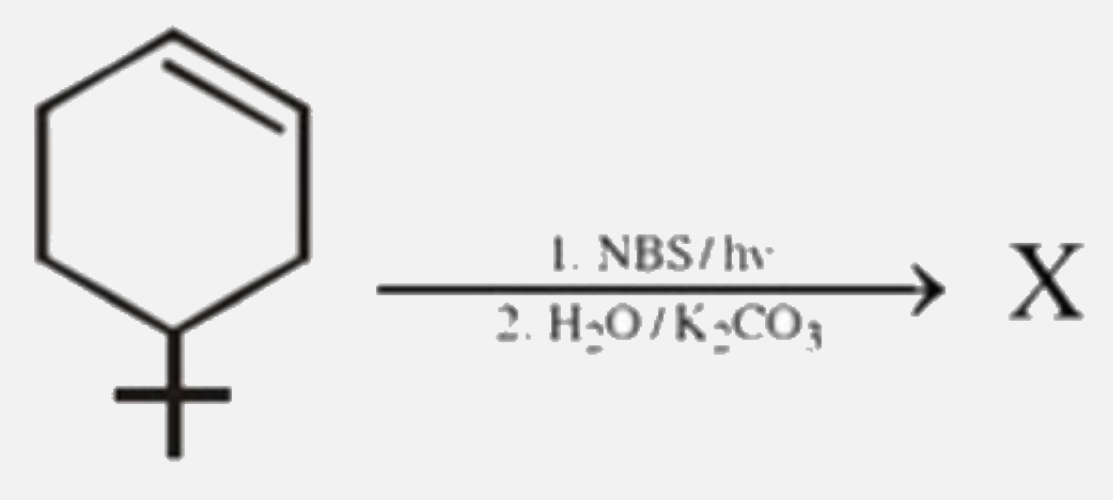
View SolutionIn the following reaction,
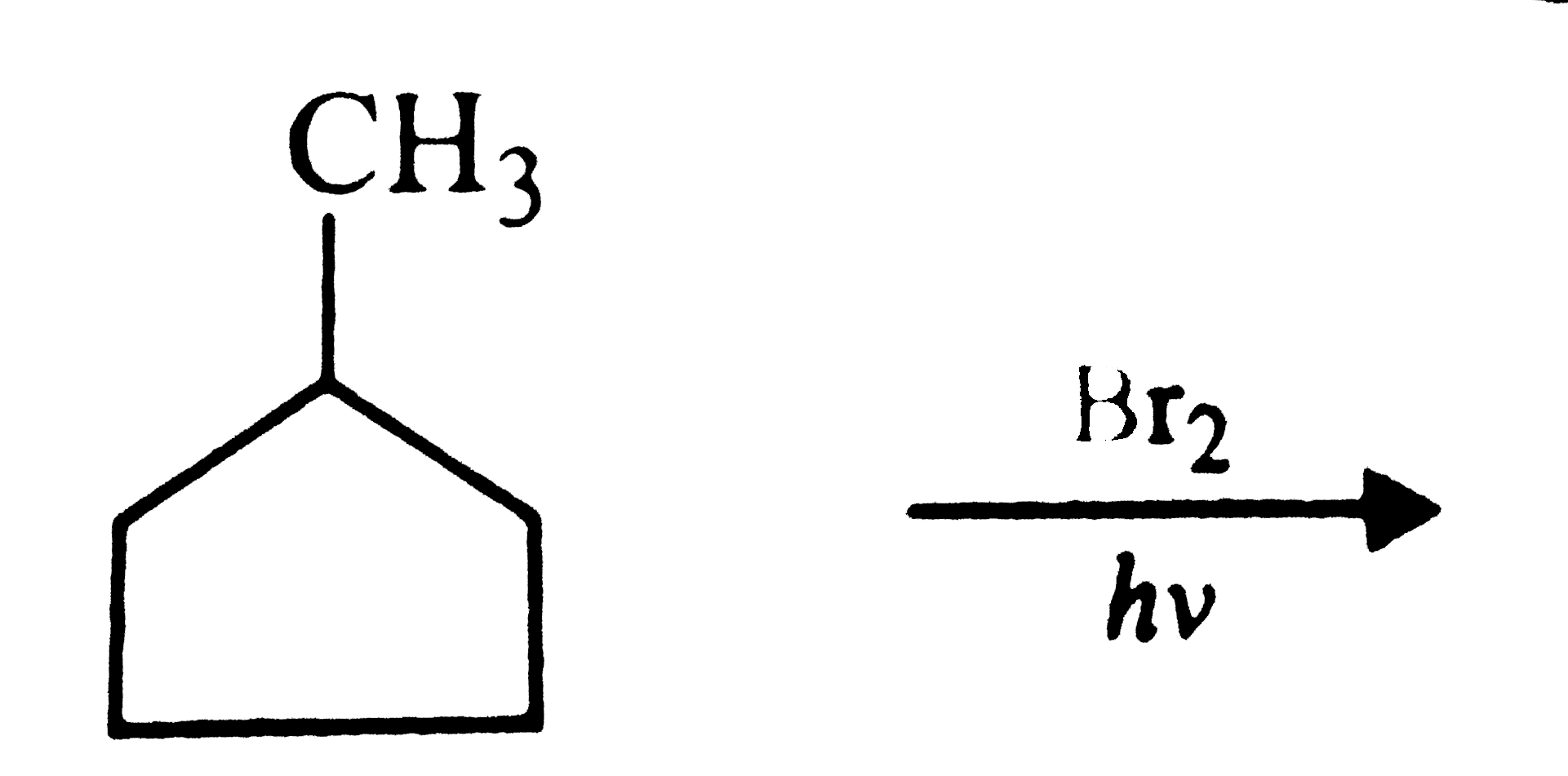
the major product obtained is
View SolutionThe synthesis of alkyl fluorides is best accomplished by:
View SolutionWhich of the following is the correct method of preparation of methyl fluoride
View SolutionBest reagent for nuclear iodination of aromatic compounds is
View SolutionWhich of the following sequence of reaction (reagents) can be used for conversion of `C_(6)H_(5)CH_(2)CH_(3)` into `C_(6)H_(5)CH=CH_(2)` ?
View SolutionThe reaction of toluene with `Cl_(2)` in the presence of `FeCl_(3)` gives X and the reaction in the presence of light gives Y. Thus, X and Y are :
View SolutionThe compound `C_(7)H_(8)` undergoes the following reactions :
`C_(7)H_(8) overset(3Cl_(2)//Delta)to Aoverset(Br_(2)//Fe)toB overset(Zn//HCl)toC`
The product 'C' is
View Solution`Ph-NH_(2)underset(0^(@)C)overset(HNO_(2))rarr A underset(BF_(3))overset(HF)rarr B overset(Delta)rarr C`, C is :
View SolutionArrange the given set of compounds in order of increasing boiling points.
1. -chloropropane
II. Iso - propyl chloride
III. 1 - chlorobutane
View SolutionAmong the following, the molecule with the highest dipole moment is :
View SolutionWhich of the following reactions is an example of nucleophilic substitution reaction?
View Solution`CH_(3)Br+Nu^(-)rarrCH_(3)Nu+Br^(-)`
The decreasing order of the rate of the above reaction with nucleophiles `(Nu^(-))` A to D is :
`[Nu^(-)=(A)PhO^(-),(B)AcO^(-),(C)HO^(-),(D)CH_(3)O^(-)]`
View SolutionIn the following group :
`-OAc(I),-OMe(II),-OSO_(2)(III),-OSO_(2)CF_(3)(IV)`
The order of leaving group ability is :
View SolutionThe most reactive nucleophile among the following is
View SolutionFor the following
`(i) I^(-) (ii) Cl^(-) (iii) Br^(-)`
the increasing order of nucleophilicity would be:
View SolutionThe decreasing order of nucleophilicity among the nucleophiles
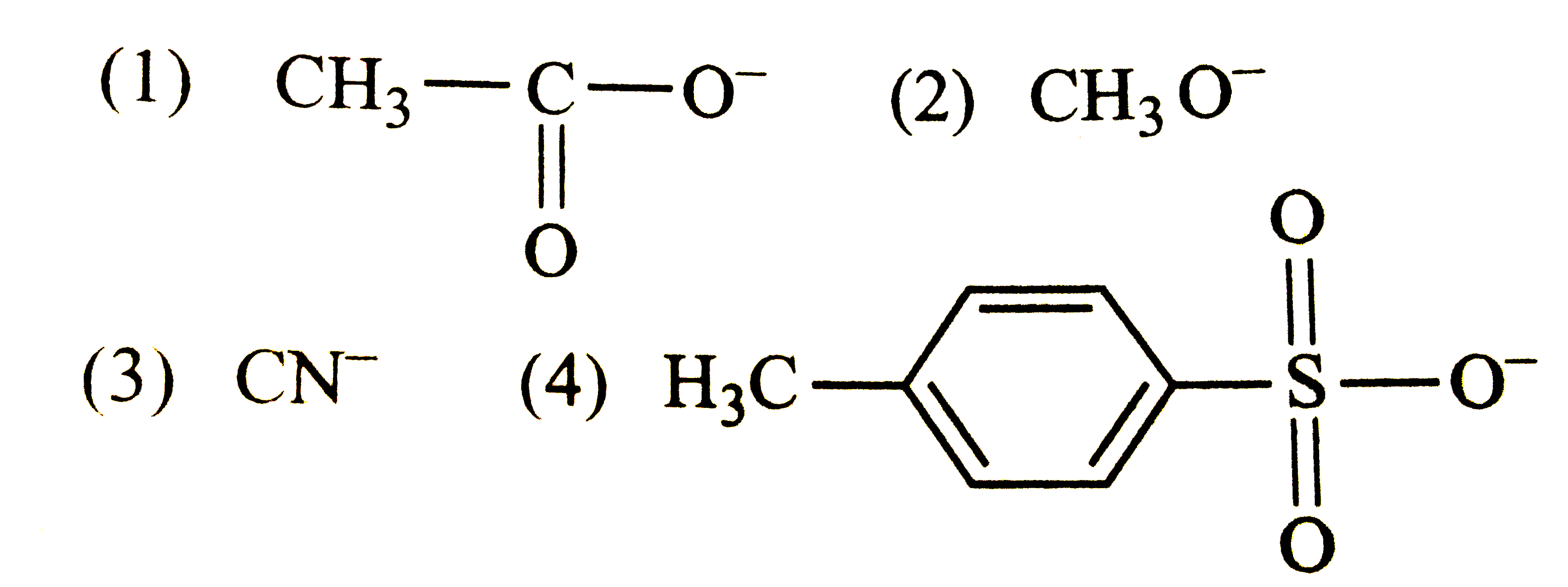 is
is
View SolutionWhich one is most reactive towards `S_(N)1` reactions ?
View SolutionConsider the following bromides:

The correct order of `S_(N)1` reactivity is
View SolutionThe order of rate of hydrolysis of alkyl halides `1^(@),2^(@),3^(@)` and `CH_(3)X` by the `S_(N^(2))` pathway is :
View SolutionThe increasing order of hydrolysis of the following compounds is

View SolutionThe organic chloro compound, which shows complete stereochemical inversion during a `S_(N)^(2)` reaction, is:
View SolutionThe major product of the following reaction is
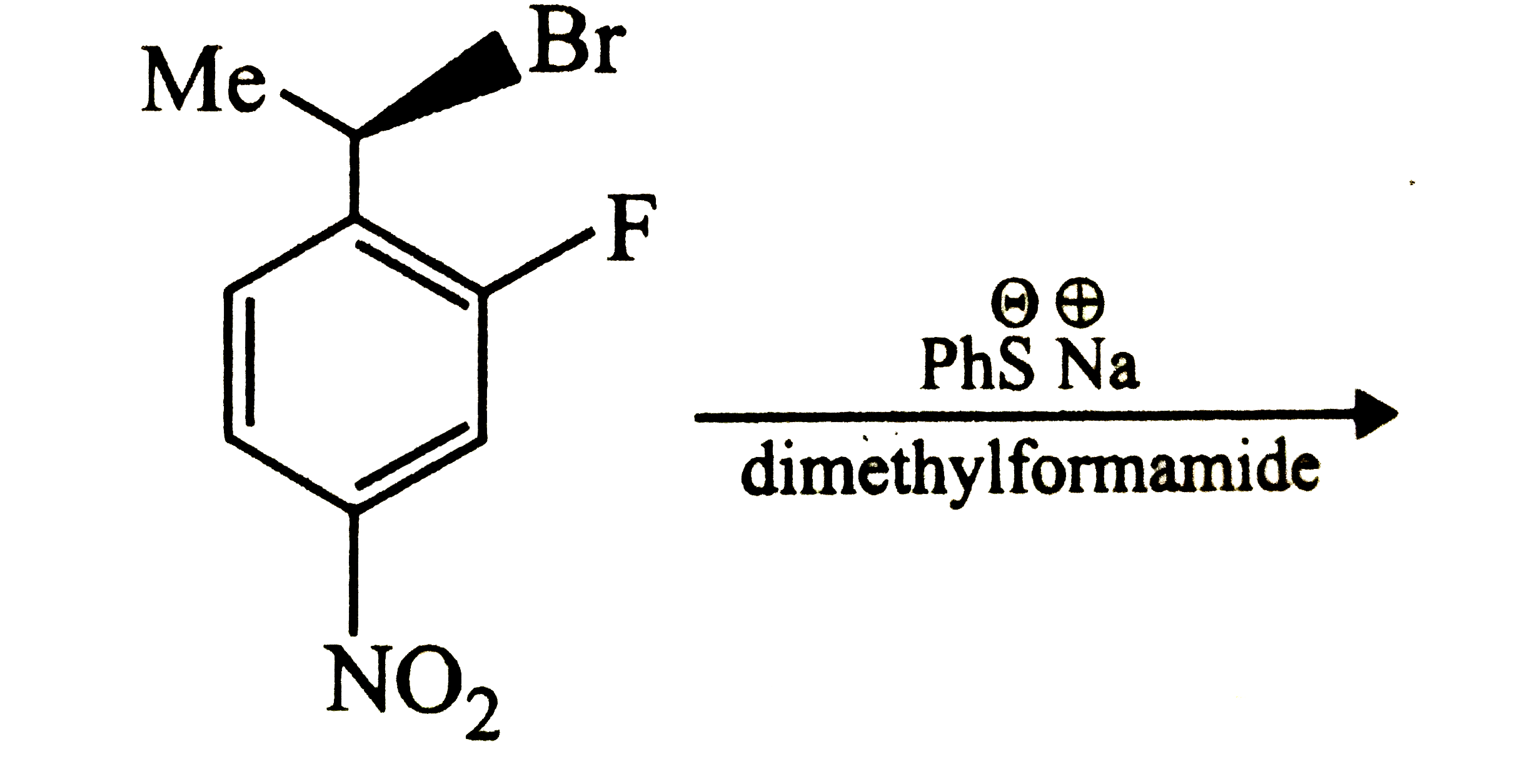
View SolutionIn a `S_(N)2` substitution reaction of the type
`R-Br+Cl^(-) overset("DMF")toR-Cl+Br^(+)`
which one of the following has the highest relative rate?
View SolutionConsider the reaction :
`CH_(3)CH_(2)CH_(2)Br+NaCNrarrCH_(3)CH_(2)CH_(2)CN+NaBr`
This reaction will be the fastest in :
View SolutionArrange the following carbanions in order of their decreasing stability.
A) `H_(3)C-C-=C^(-)`
B) `H-C-=C^(-)`
C) `H_(3)C-Cbar(H)_(2)`
View SolutionKI in acetone, undergoes `S_(N)2` reaction with each of P,Q,R and S. The rate of the reaction vary as

View SolutionIn `S_(N)2` reaction, the correct order of reactivity for following compounds
`CH_(3)Cl,CH_(3)CH_(2)Cl,(CH_(3))_(2)CHCl,(CH_(3))_(3)C-Cl` is
View SolutionIn an `S_(N)1`reaction on chiral centres, there is
View SolutionIdentify the set of reagents/ reaction condition ‘X’ and ‘Y’ in the following set of transformations :
`CH_(3)-CH_(2)-CH_(2)Br overset(X)to "Product" overset(Y)to CH_(3)-underset(Br)underset(|)CH-CH_(3)`
View SolutionThe ease of dehydrohalogenation of alkyl halide with alcoholic KOH is-
View SolutionWhich of the following organohalogen compound when heated with alcoholic KOH does not undergo dehydrohalogenation reaction :
View SolutionFor the following reaction :
`(A) CH_(3)CH_(2)CH_(2)Br+KOH to CH_(3)CH=CH_(2)
`+KBr +H_(2)O`
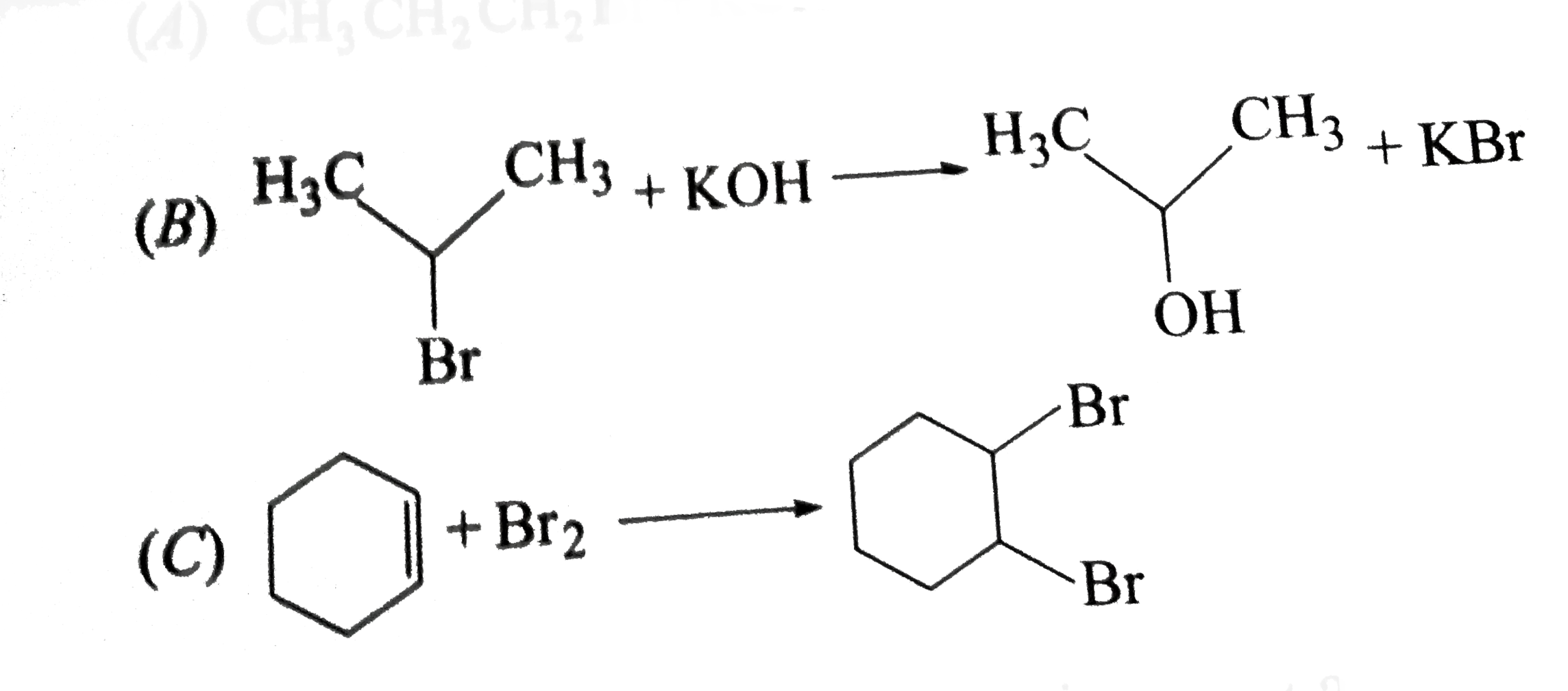
which of the following statement is correct ?
View SolutionThe major product formed in the reaction is:
`CH_(3)-underset(H)underset(|)overset(CH_(3))overset(|)(C)-CH_(2)Brunderset(CH_(3)OH)overset(CH_(3)O^(Ө))to`
View Solution`underset(("major"))(B) underset(CH_(3)CH_(2)OH)overset(CH_(3)CH_(2)O^(-)Na^(+))larr CH_(3)-underset(CH_(3))underset(|)overset(CH_(3))overset(|)(C)-Br overset(CH_(3)CH_(2)OH)toA(major)`
A and B are
View Solution2-chloro-2-methylpentane on reaction with sodium methoxide in methanol yields:
(a) `C_(2)H_(5)CH_(2)overset(CH_(3))overset(|)underset(CH_(3))underset(|)(C)-OCH_(3)` (b) `C_(2)H_(5)CH_(2)underset(CH_(3))underset(|)(C)=CH_(2)` (c) `C_(2)H_(5)CH_(2)=underset(CH_(3))underset(|)(C)-CH_(3)`
View SolutionThe major product obtained on treatment of `CH_(3)CH_(2)CH(F) CH_(3) " with " CH_(3)O^(-)//CH_(3)OH` is :
View SolutionAn alkyl chloride produces a single alkene when it reacts with sodium ethoxide and ethanol . This alkene on hydrogenation produces 2-Methylbutane. What is the identity of the alkyl halide ?
View SolutionIn the following reaction,
`C_(6)H_(5)CH_(2)Br underset((ii)H_(3)O^(+))overset((i)" Mg, ether")toX`,
the product 'X' is
View Solution`(CH_(3))_(3)CMgBr` on reaction with `D_(2)O` produces `:`
View SolutionThe products expected to be formed in the Wurtz reaction of a mixture of neopentyl bromide and isobutyl bromide are :
(i) 2,2,4-trimethylpentane
(ii) 2,2,5,5-tetramethylhexane
(iii) 2,2,4,4- tetramethlhexane
(iv) 2,5-dimethylhexane
(v) 2,2,5-trimethylhexane
View SolutionCycloalkane formed when 1,4-dibromopentane is heated with sodium is:
View Solution1-bromo-3-chlorocyclobutane when treated with two equivalents of Na, in the presence of ether which of the following will be formed ?
View SolutionTwo possible stereo-structures of `CH_(3)CHOHCOOH`, which are optically active are called
View SolutionWhich of the following compounds is chiral? .
View SolutionHow many chiral compounds are possible on mono chlorination of 2-methyl butane ?
View SolutionOut of the following the alkene that exhibits optical isomerism is
View SolutionThe total number of optical isomers possible for 2,3-dibrom https://d10lpgp6xz60nq.cloudfront.net/physics_images/NAR_CHM_V05_XI_C04_E01_283_Q01.png
View SolutionHow many stereoisomerse does this molecule has?
`CH_(3)CH=CHCH_(2)CHBrCH_(3)`
View SolutionIn a mixture, two enantiomers are found to be present in 85% and 15% respectively. The enatiomeric excess (e,e) is
View SolutionA solution of ( + )-1-chloro-1-phenylethane in t toluene racemises slowly in the presence of a small amount of `SbCl_(5)` due to the formation of
View Solution ltBrgt Give the number of N and M?
ltBrgt Give the number of N and M?
View SolutionThe absolute configuration of
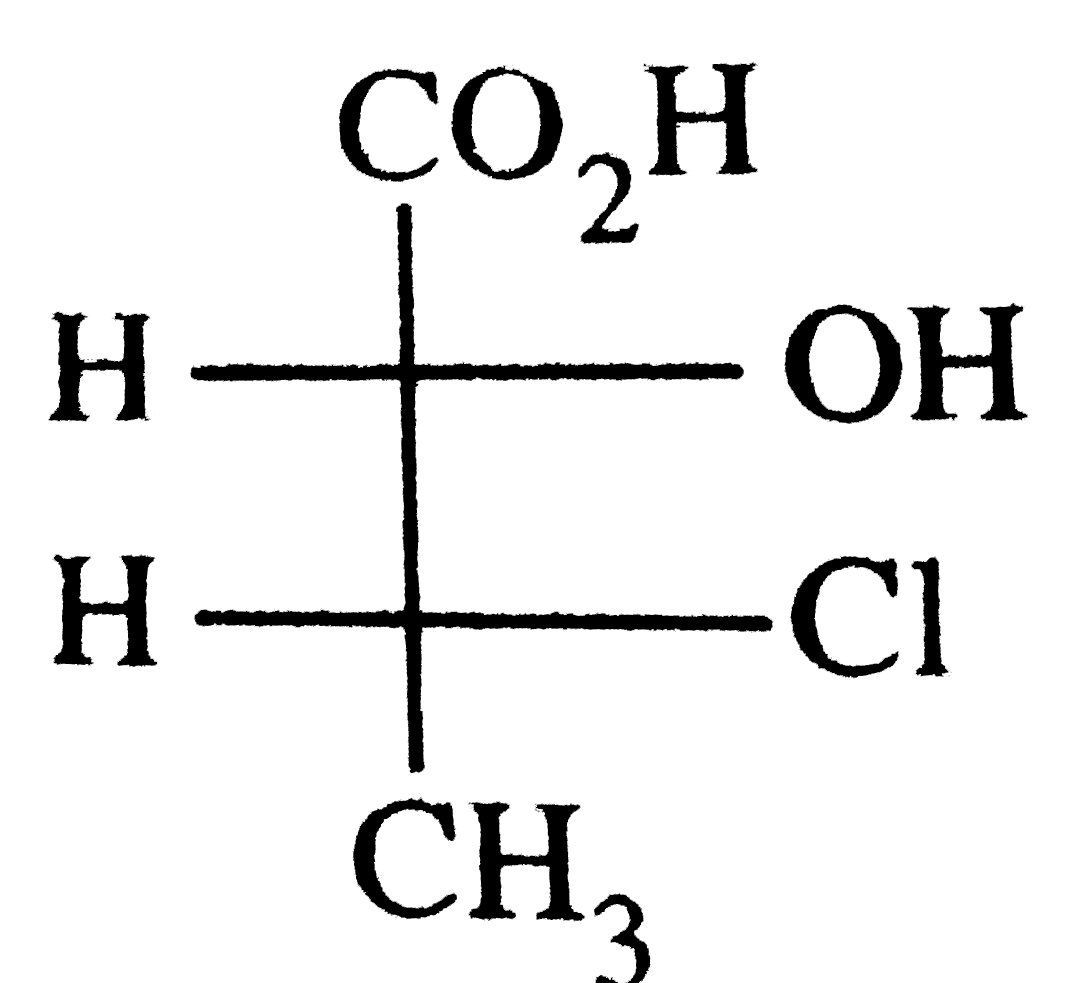
View SolutionWhich of the following biphynyl is optically active?
View Solution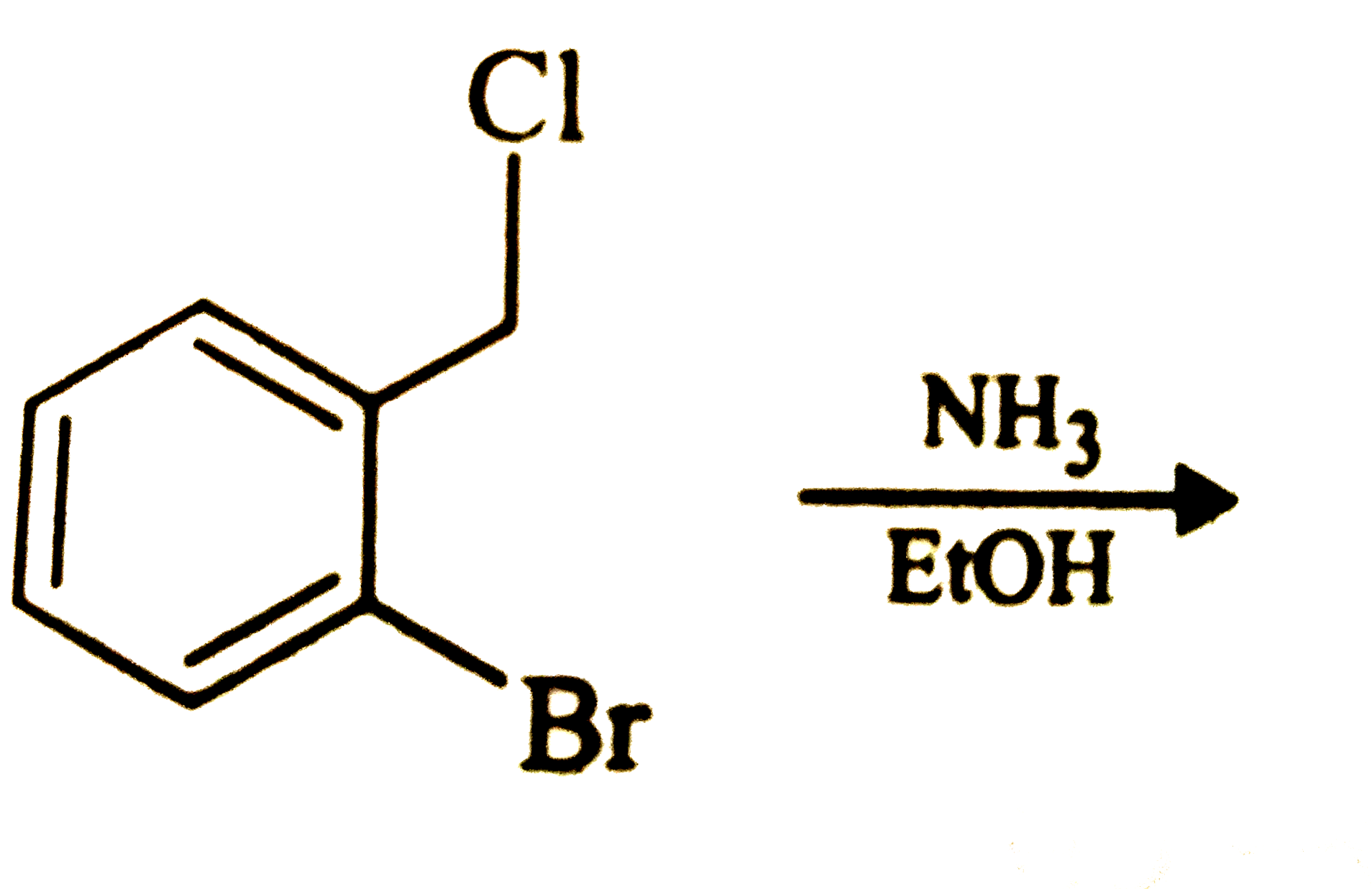
The product of the above reaction is
View SolutionThe structure of the major product formed in the following reaction is
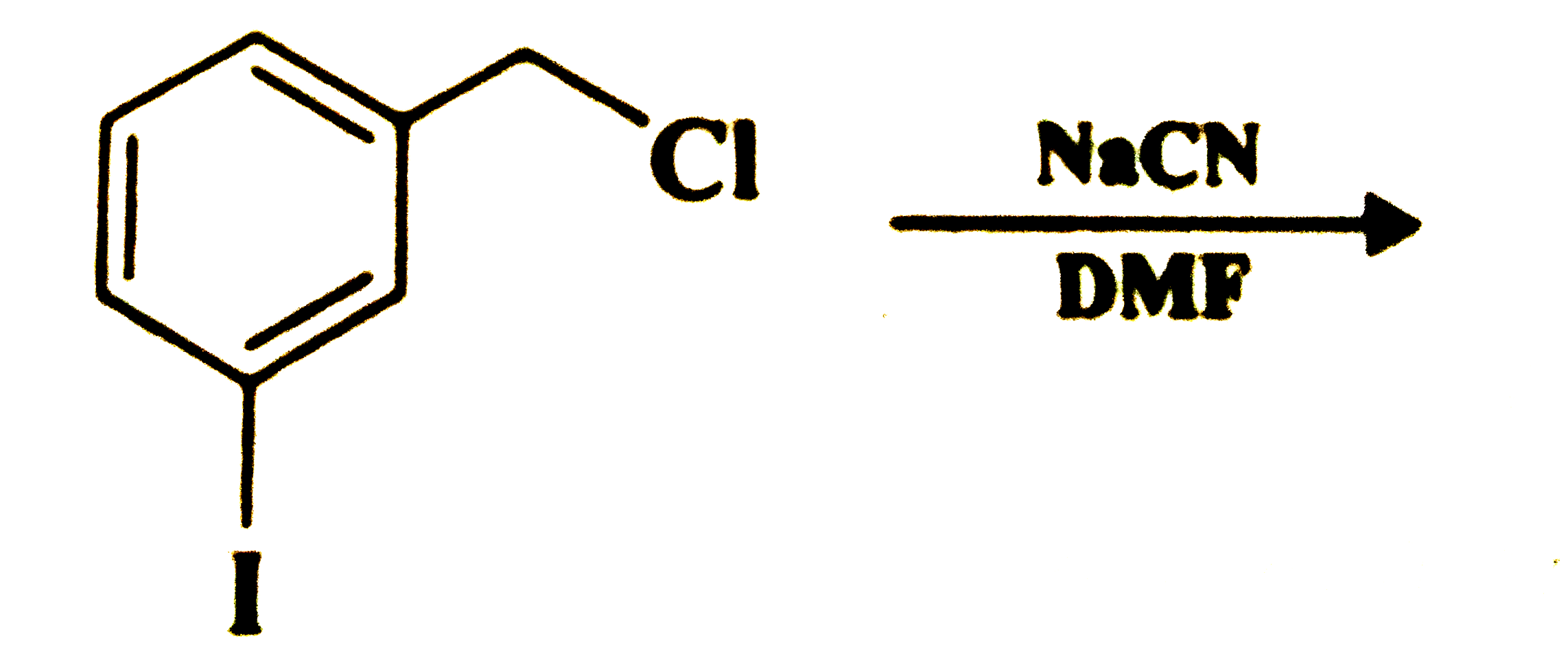
View SolutionBottles containing `C_(6)H_(5)I` and `C_(6)H_(5)-CH_(2)I` lost their original lables. They were labelled A and B for festing. A and B were separately taken in a test tube and boiled with `NaOH` solution. The end solution in each tube was made acidic with dilute `HNO_(3)` and then some `AgNO_(3)` solution was added. Substance B gave a yellow precipitate. Which one of the following statements is true for this experiment.
View SolutionThe correct order of increasing reactivity of C-X bond towards nucleophile in the following compound is
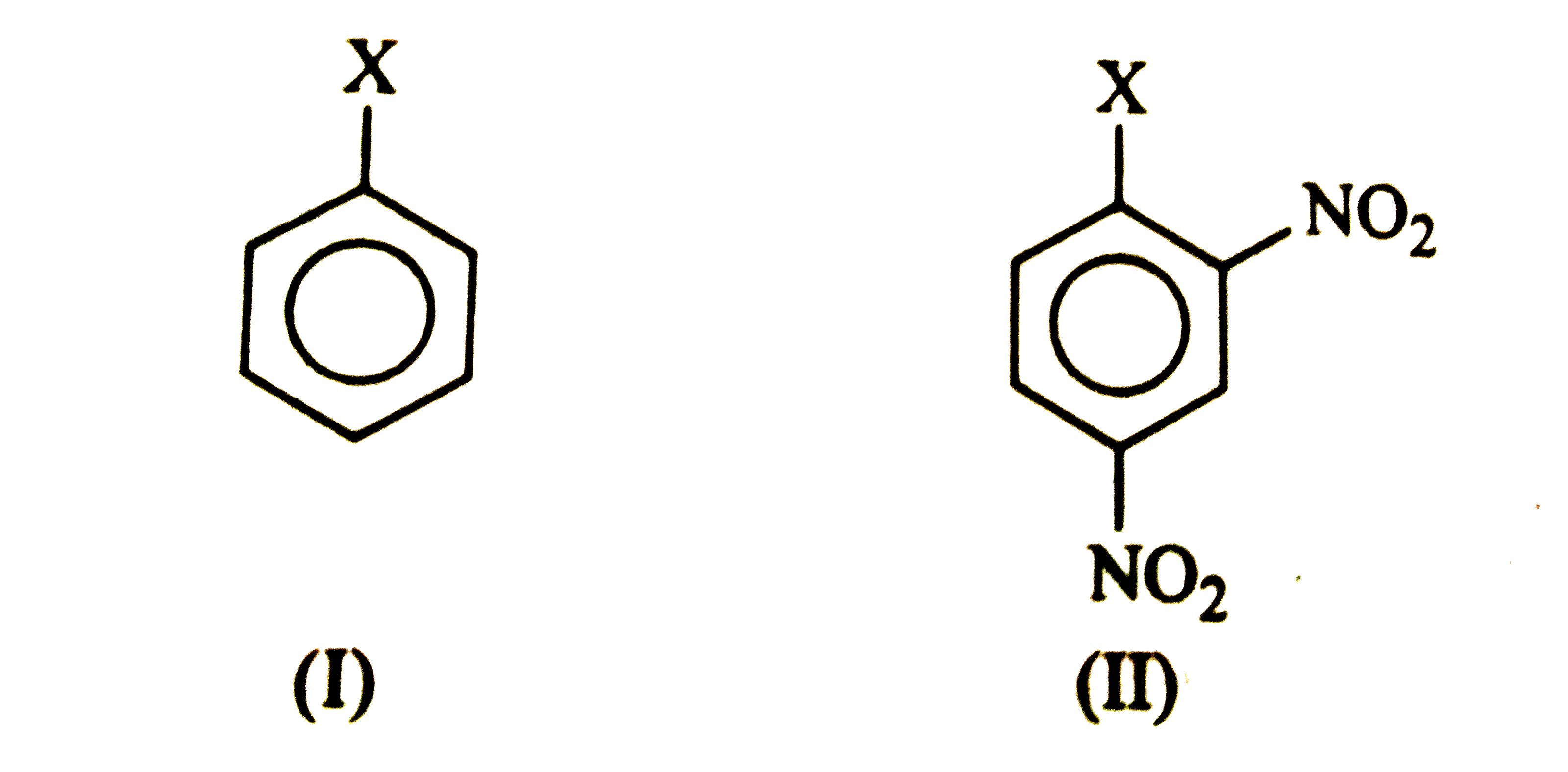
View SolutionWhich of the following compounds undergoes mucleophilic substitution reaction most easily?
View SolutionWhich one of the following reactions is most suitable for the preparation of n-propyl benzene
View SolutionWhich of the following can be used as the halide component for Friedel Crafts reaction ?
View SolutionTrichloroacetaldehyde, `C Cl_(3)CHO` reacts with chlorobenzene in presence of sulphuric acid and produces.
View SolutionWhat is DDT among the following
View Solution
Competition Focus (JEE (MAIN AND ADVANCED)/MEDICAL ENTRANCE SPECIAL (MULTIPLE CHOICE QUESTIONS - I)) questions and complete solutions for chapter HALOALKANES AND HALOARENES of PRADEEP CHEMISTRY (HINGLISH) of Class 12
All Exercises from PRADEEP Class 12 CHEMISTRY HALOALKANES AND HALOARENES
- ADDITIONAL QUESTIONS (LONG ANSWER QUESTIONS)
- ADDITIONAL QUESTIONS (SHORT ANSWER QUESTIONS)
- ADDITIONAL QUESTIONS (VERY SHORT ANSWER QUESTIONS)
- Competition Focus (JEE (MAIN AND ADVANCED)/MEDICAL ENTRANCE SPECIAL (INTEGER TYPE QUESTIONS - VI))
- Competition Focus (JEE (MAIN AND ADVANCED)/MEDICAL ENTRANCE SPECIAL (MULTIPLE CHOICE QUESTIONS - I))
- Competition Focus (JEE (MAIN AND ADVANCED)/MEDICAL ENTRANCE SPECIAL (MULTIPLE CHOICE QUESTIONS-II))
- Competition Focus (JEE (MAIN AND ADVANCED)/MEDICAL ENTRANCE SPECIAL (MULTIPLE CHOICE QUESTIONS-III COMPREHENSION TYPE ))
- Competition Focus (JEE (MAIN AND ADVANCED)/MEDICAL ENTRANCE SPECIAL (VII - ASSERTION-REASON TYPE QUESTIONS))
- Competition Focus (JEE (MAIN AND ADVANCED)/MEDICAL ENTRANCE SPECIAL (VII - ASSERTION-REASON TYPE QUESTIONS)) TYPE - II
- CONCEPTUAL QUESTIONS
- CURIOSITY QUESTION
- HIGHER ORDER THINKING SKILLS ((QUESTIONS AND PROBLEMS WITH ANSWERS/SOLUTION)
- HOTS PROBLEMS
- IMPORTANT QUESTIONS FOR BOARD EXAMINATION
- NCERT EXEMPLAR PROBLEMS WITH ANSWERS, HINTS AND SOLUTIONS (Assertion and reason type questions)
- NCERT EXEMPLAR PROBLEMS WITH ANSWERS, HINTS AND SOLUTIONS (LONG ANSWER QUESTIONS)
- NCERT EXEMPLAR PROBLEMS WITH ANSWERS, HINTS AND SOLUTIONS (MATCHING TYPE QUESTIONS)
- NCERT EXEMPLAR PROBLEMS WITH ANSWERS, HINTS AND SOLUTIONS (MULTIPLE CHOICE QUESTIONS-I)
- NCERT EXEMPLAR PROBLEMS WITH ANSWERS, HINTS AND SOLUTIONS (MULTIPLE CHOICE QUESTIONS-II)
- NCERT EXEMPLAR PROBLEMS WITH ANSWERS, HINTS AND SOLUTIONS (SHORT ANSWER QUESTIONS)
- NCERT QUESTIONS AND EXERCISES WITH ANSWERS (NCERT EXERCISES)
- NCERT QUESTIONS AND EXERCISES WITH ANSWERS (NCERT INTEXT SOLVED QUESTIONS)
- NCERT QUESTIONS AND EXERCISES WITH ANSWERS (NCERT INTEXT UNSOLVED QUESTIONS)
- TEST YOUR GRIP (FILL IN THE BLANKS)
- TEST YOUR GRIP (MULTIPLE CHOICE QUESTIONS)
- VALUE BASED QUESTIONS WITH ANSWERS